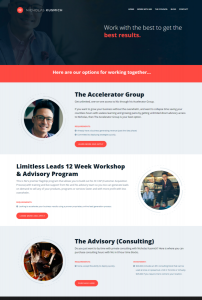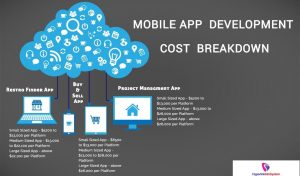
If someone told you that your startup could cost you nothing to get off the ground, you would think it was a joke. It may sound impossible, but it truly isn’t with careful planning, a pinch of talent, and a lot of hard work.
Many entrepreneurs launch startups without spending a dime on the foundation of their business, using a little insider knowledge and elbow grease.
You can join the league of business owners who built their companies starting from scratch by following these four tips.
Believe In A Zero-dollar Investment
Just because you have no money to invest in your company doesn’t mean it’s a lost cause.
When you believe in your idea, you can make it work with a zero-dollar investment if you have the confidence and willpower to put in all the work it will need. There are many free tools for the eager entrepreneur if you know where to look, and that includes the tools to build your website and market your product.
Start by building a website. No matter what product or service you offer, you’ll need a website. You can build one at no cost, at least initially, and spend money improving it once you’ve already made a profit. There are step-by-step guides for beginners available online if you don’t know where to start, or you can jump right in and figure it out as you go along.
Today’s websites have state-of-the-art design techniques such as responsive layouts and video content, but you can start small with a basic design. The main point is to have a place where your consumers can learn about your product or service, place an order, and contact your company. Once you’ve established your company and made some cash, you can redesign and improve your website for better optimization.
Another zero-dollar investment opportunity comes in the form of using a service-based business to fund a product-based business. If you have a talent or skill that you can use to trade business opportunities, capitalize on it. For example, if you know someone with an empty office space, trade your computer troubleshooting skills for a month’s rent. If your company can provide a service initially, use it to build up to the product you’d like to sell.
Capitalize On Your Online Opportunities
Besides creating a free website, you can capitalize on other online opportunities, as well. Building your brand doesn’t have to come from expensive marketing strategies. While big data and analytics are helpful to a business in the long run, you can build your brand using your own social media know-how at the start.
Begin by identifying your target audience. Ask yourself what type of person would be most likely to buy your product or service. Look at your audience’s age range, demographics, location-specific targeting, and income target. If your company offers high-end web design services, for instance, your target audience will lean more toward the mid- to high-income range than the low-income range.
 Source: The Demographics of Social Media Users[/caption
Source: The Demographics of Social Media Users[/caption
According to Pew Research’s demographic charts, if your target audience trends toward women 18 to 29 years old, Facebook would be a good choice. Consider Instagram or Snapchat as well for a younger audience, or LinkedIn if you’re targeting an older demographic. Understanding which social media platforms your target audience uses can help you establish your brand without spending anything in marketing. Simply create a profile with your brand’s name and logo, and start introducing people to your company.
Keep your personal and business social media accounts separate. Otherwise, you risk looking unprofessional, and consumers may not take you seriously. Social media marketing is not the place to push your products blatantly. Consumers on social media sites want to see the personal side of your brand, not the sales side. Let your brand’s personality shine by posting photos of yourself and your product, offering something of value to consumers with your posts. Social media matters to startups, and you can begin marketing on every major platform without paying a penny.
If you don’t know what you’re doing on social media, however, it may be wise to skip this step until you can afford to hire someone who does know what they’re doing. Fumbling around social media sites will hurt you, not help you. Social media marketing is a complex science, and if you don’t possess the natural talent for it, you may be better off sticking with traditional marketing. Print ads still have the power to reach your audience, as do email marketing campaigns.
Try Public Funding Outlets
Thanks to the rise of major crowdfunding sites such as Kickstarter, entrepreneurs have the opportunity to raise hundreds of thousands of dollars without putting in a cent of their own money. Crowdfunding doesn’t guarantee a response, but great ideas are bound to see success eventually. If you believe your idea is truly great, entering it on a crowdfunding site may have a big payoff.
Differentiate your idea from competitors by showing the value of your intellectual property. A successful startup gives the public something they’re missing, a solution to a current problem, or fills a gap in the niche market. Uber made the taxi more comfortable and convenient. Airbnb made traveling much cheaper. Your product or service should fill a need. Capitalize on this fact by making your idea the strongpoint of your pitch to investors.
If you’re confident that your product or service is one that people will want, investors will listen. It may take time and hard work, but if you believe in your company, then others will, too. You can consider a business incubator program, sponsored by local organizations, or an accelerator that provides funding. Accelerators expect a rapid return on investment, however, so be prepared to deliver.
Nail The Investment Pitch
Pitching your idea to investors can be grueling work, and often quite a blow to your self-esteem. You’ve worked hard to get your startup off the ground, and hearing that someone doesn’t believe in it enough to put money into it can be difficult. You have to remain optimistic, however, and remember that a “no” isn’t personal – it’s business. These are some of the best tips to help you pitch your idea:
- Tell a compelling story to engage your investors.
- Share what makes your product or service unique (i.e., the problem your product or service solves).
- Build credibility by listing your previous successes. Talk about a social media platform that’s generated a lot of buzz about your brand, your successful prototype, and other accomplishments.
- Narrow your target audience. Pitching an idea that the whole world will want is too broad, and will turn investors away.
- Explain how you plan to reach your customers. This plan should include the costs of marketing efforts.
- Touch on your competition and explain why your product or service is more valuable.
- Present a solid financial projection. Your projection should extend three to five years into the future and include supporting statistics.
If you nail your presentation in front of the right people, you could acquire partial or even total funding for your startup – and all you invested was your time and effort into building the perfect business pitch.
* Adapted lead image: Public Domain, pixabay.com via getstencil.com
Creating Your Company Using $ 0
The post Creating Your Company Using $ 0 appeared first on Search Engine People Blog.
Search Engine People Blog(69)









